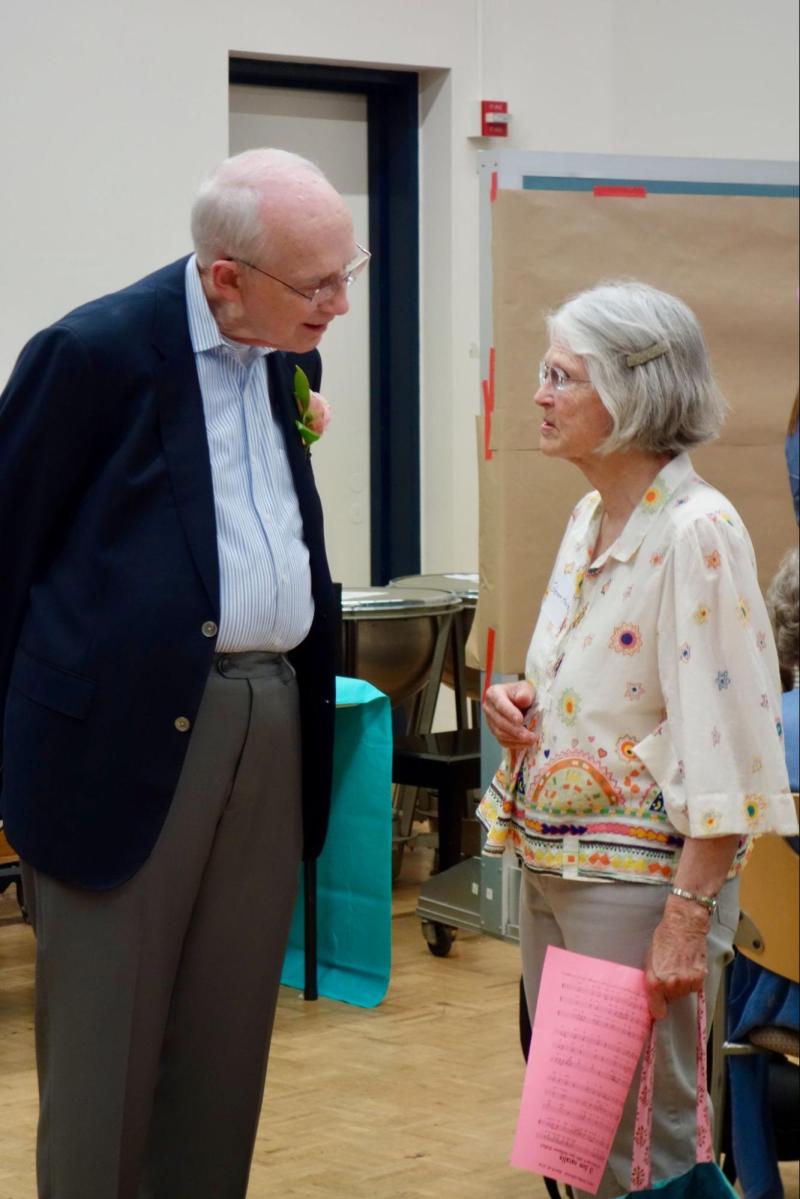William “Bill” Mahrt Ph.D. ’69, associate professor of music since 1980, died of a stroke on Jan. 1 after a year of several health problems. Mahrt was 85 years old.
Friends, students and colleagues remember Mahrt as kind, gracious and humble, the type of person who never failed to bring smiles to peoples’ faces.
Mahrt attended Gonzaga University and University of Washington, then completed his Ph.D. from Stanford in 1969. A lifelong scholar and musician, Mahrt also conducted Gregorian chant for more than 60 years, guiding generations of singers. After teaching briefly at Case Western Reserve University and the Eastman School of Music, Mahrt returned to Stanford in 1972 to teach Renaissance and Medieval music.
From 1972 to 2024, Mahrt directed Stanford’s Early Music Singers, a group of Stanford community members who perform late Medieval, Renaissance and Early Baroque music. His final concert last June featured 15th to 17th century repertoire in Latin, Spanish, French, German and English.
Outside of the University, Mahrt directed St. Ann Choir, a Gregorian choir at St. Thomas Aquinas Church in Palo Alto. Mahrt enjoyed traveling to teach Gregorian chant and its relationship to the liturgy of the church. In November of 2023, the Catholic Institute of Sacred Music honored Mahrt at their conference, “The Musical Shape of the Liturgy: Celebrating the Life and Work of William P. Mahrt.”
Members of Mahrt’s choirs remembered Mahrt fondly.
Mahrt greatly inspired choir members to fall in love with Gregorian chant. Church choir member Kerry McCarthy Ph.D. ’03 came to Stanford in 1997 to study with Mahrt, after discovering the choir form under the professor’s off-campus instruction. McCarthy has since become an assistant professor of music at Duke University and wrote “Liturgy and Contemplation in Byrd’s Gradualia.”
“It’s not just a hobby, it’s a way of life,” McCarthy said in a Stanford Magazine piece. “It gets into your blood. I don’t know what I did before it.”

Mahrt’s colleagues reminisced about his humility amid the competitive environment of academia.
“In a profession that does not lack competition for awards, accolades and promotions, Bill was kind to everybody,” David Lawrence wrote in a postscript. “In my 50 years at Stanford I never once heard anyone mention a harsh word about him.”
Mahrt nurtured an open mind toward the ideas his colleagues aspired to pursue. Professor of fine arts Jesse Rodin was studying Marbrianus de Orto, whose music had never been recorded, according to Rodin. Mahrt offered to have the Early Music Singers perform several pieces by de Orto, even inviting Rodin himself to participate in the performance.
“Bill’s eagerness to help out a colleague by boldly taking on new and unfamiliar repertoire speaks volumes about him as a person and a scholar,” Rodin said.
Just as Mahrt extended his welcoming arms to colleagues, he also embraced a variety of topics in music history.
”In my early years on the faculty I would disguise myself as a student and sneak into his classes. Of course Bill knew about it, and had absolutely no problem with it,” Lawrence wrote. “I was particularly struck by the fact that, while his primary focus may have been on a composer like Guillaume de Machaut, nobody taught the music of Johannes Brahms with greater insight and sensitivity than Bill.”
Another of Mahrt’s colleagues Ted Gioia wrote in his postscript: “Not many knew that Gregorian chant and medieval/Renaissance polyphony flourished in Palo Alto — but I’d be there, and I’d see René Girard there too. It was all because of William Mahrt — a beatific soul.” Gioia also shared that Mahrt encouraged his jazz teaching at a time when some were skeptical about its legitimacy, another testament to Mahrt’s dedication to music.
Rodin spoke similarly to Mahrt’s impressive dedication, specifically over a body of music spanning the middle ages through the end of the 16th century.
“This mastery was complemented by uncommon erudition,” Rodin wrote to The Daily. “Consider that he had to have the floors of his home reinforced to accommodate high-density bookshelves!”
Palm remembered this detail, too, sharing how Mahrt “remodeled his second bedroom to bear the weight of book stacks he installed for his extensive library,” Palm said.
More than just his music, Mahrt enjoyed a library of other collections.
“He had an extensive collection of orchids on the deck outside his home. He loved red wine and good coffee,” choir member Miriam Palm said. “I knew him as a dear friend and used to visit him, bringing my banana bread that he loved. He was invariably gracious and glad to see me, as he was with all his friends.”
A celebration of Mahrt’s life was held Friday, Jan. 10 at noon at Mission Dolores in San Francisco.
